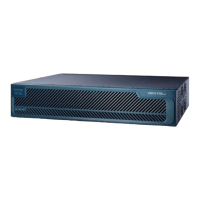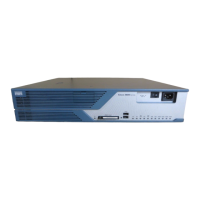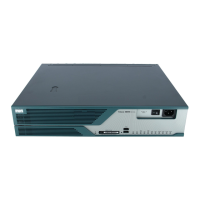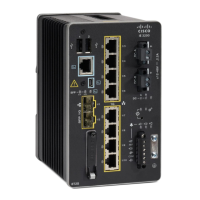2-4
Cisco 3700 Series Routers Hardware Installation Guide
OL-2180-07
Chapter 2 Preparing to Install the Router
General Site Requirements
Site Environment
Cisco 3700 series routers can be placed on a desktop or installed in a rack. The location of your router
and the layout of your equipment rack or wiring room are extremely important considerations for proper
operation. Equipment placed too close together, inadequate ventilation, and inaccessible panels can
cause malfunctions and shutdowns, and can make maintenance difficult. Plan for access to both front
and rear panels of the router.
When planning your site layout and equipment locations, remember the precautions described in the next
section, “Site Configuration,” to help avoid equipment failures and reduce the possibility of
environmentally caused shutdowns. If you are currently experiencing shutdowns or an unusually high
number of errors with your existing equipment, these precautions may help you isolate the cause of the
failures and prevent future problems.
Site Configuration
The following precautions will help you plan an acceptable operating environment for your router and
will help you avoid environmentally caused equipment failures:
• Ensure that the room where your router operates has adequate circulation. Electrical equipment
generates heat. Without adequate circulation, ambient air temperature may not cool equipment to
acceptable operating temperatures.
• Always follow ESD-prevention procedures described in the “Preventing Electrostatic Discharge
Damage” section on page 2-2 to avoid damage to equipment. Damage from static discharge can
cause immediate or intermittent equipment failure.
• Ensure that the chassis cover or mainboard tray and module rear panels are secure. All empty
network module slots, interface card slots, and power supply bays must have filler panels installed.
The chassis is designed to allow cooling air to flow within it, through specially designed cooling
slots. A chassis with uncovered openings will create air leaks, which may interrupt and reduce the
flow of air across internal components.
Equipment Racks
Cisco 3700 series routers include brackets for use with a 19-inch rack or, if specified in your order,
optional larger brackets for use with a 23-inch rack.
The following information will help you plan your equipment rack configuration:
• Allow clearance around the rack for maintenance.
• Enclosed racks must have adequate ventilation. Ensure that the rack is not congested, because each
router generates heat. An enclosed rack should have louvered sides and a fan to provide cooling air.
Heat generated by equipment near the bottom of the rack can be drawn upward into the intake ports
of the equipment above.
• When mounting a chassis in an open rack, ensure that the rack frame does not block the intake ports
or exhaust ports. If the chassis is installed on slides, check the position of the chassis when it is
seated into the rack.

